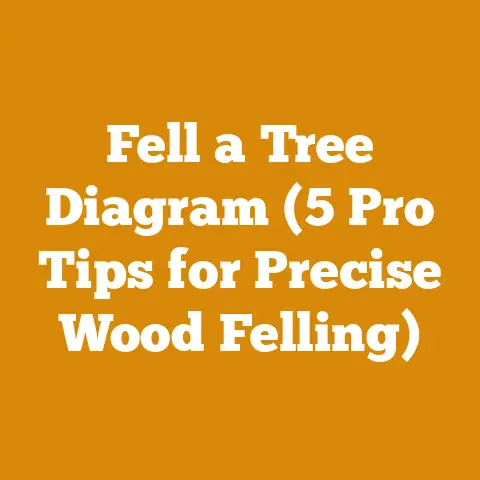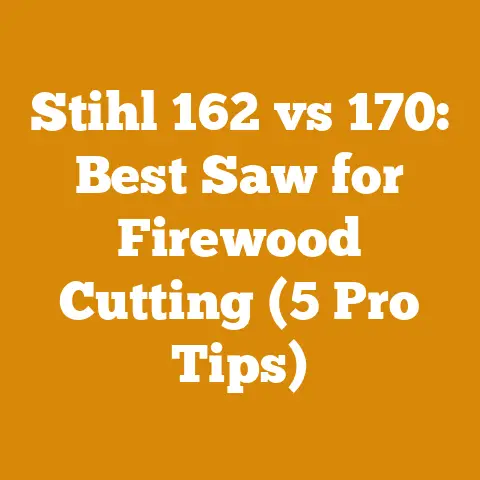Echo Backpack Blower vs Stihl: Best Leaf Blower Picks (5 Pro Tips)
The Backpack Blower Battle: Echo vs. Stihl – Finding Your Perfect Leaf-Clearing Partner (Plus 5 Pro Tips!)
Have you ever stood knee-deep in a carpet of autumn leaves, the air thick with the smell of damp earth and the distant hum of… competition? I have. Many times. For years, the annual leaf-clearing ritual in my neck of the woods has been a friendly (but fierce) rivalry between neighbors, armed with everything from rakes and tarps to the latest and greatest backpack blowers. And the two brands that consistently dominate the conversation are Echo and Stihl.
Choosing the right backpack blower can feel like selecting a weapon for this annual battle. It’s an investment, and you want to make sure you’re getting the most bang for your buck – or rather, the most leaves cleared for your effort. This guide is designed to cut through the marketing hype and give you a real-world, practical comparison between Echo and Stihl backpack blowers, along with five pro tips I’ve learned over years of battling fallen foliage.
Why Backpack Blowers? The Case for Going Hands-Free
Before diving into the Echo vs. Stihl debate, let’s quickly address the elephant in the yard: why choose a backpack blower in the first place? I remember the days of wrestling with a handheld blower, my arm aching after just a few minutes. The advantages of a backpack blower are significant:
- Ergonomics: Distributing the weight across your back and shoulders allows for longer, less tiring operation.
- Power: Backpack blowers generally offer more power than handheld models, letting you move larger piles of leaves and debris.
- Efficiency: Covering more ground with less effort translates to faster cleanup times.
- Accessibility: Reaching under bushes and around obstacles becomes much easier with the freedom of movement a backpack blower provides.
For larger properties, commercial use, or even just those who value comfort and efficiency, a backpack blower is a game-changer.
Echo vs. Stihl: The Brands Face Off
Echo and Stihl are titans in the outdoor power equipment industry, each with a loyal following. Both brands are known for their quality, durability, and performance. However, they also have distinct characteristics that appeal to different users.
Echo: The Dependable Workhorse
Echo has a reputation for building reliable, long-lasting machines. I’ve personally seen Echo equipment still running strong after decades of use. Here’s what Echo typically brings to the table:
- Value: Echo often offers a more competitive price point compared to Stihl, making it an attractive option for budget-conscious buyers.
- Simplicity: Echo designs tend to be straightforward and easy to maintain, which is a major plus for DIYers.
- Warranty: Echo often boasts impressive warranties, giving you peace of mind knowing your investment is protected. For example, their consumer warranty can be up to 5 years.
- User-Friendly: Echo blowers are generally easy to start and operate, even for first-time users.
Stihl: The Performance Powerhouse
Stihl is renowned for its innovative technology, powerful engines, and professional-grade performance. My experience with Stihl has always been one of raw, unadulterated power. Here’s what Stihl typically offers:
- Performance: Stihl blowers often deliver higher air volume and velocity, making them ideal for tackling demanding jobs.
- Innovation: Stihl is constantly pushing the boundaries of blower technology, incorporating features like stratified scavenging engines and advanced anti-vibration systems.
- Durability: Stihl machines are built to withstand the rigors of daily professional use, ensuring they’ll hold up under heavy workloads.
- Features: Stihl often includes features like adjustable handles, cruise control, and tool-less air filter access for added convenience.
Key Specifications: Digging into the Details
To truly compare Echo and Stihl backpack blowers, we need to look at the numbers. Here’s a breakdown of the key specifications to consider:
- Engine Displacement (cc): This indicates the size of the engine. A larger engine generally means more power.
- Air Volume (CFM): Cubic feet per minute. This measures the amount of air the blower can move. Higher CFM means you can clear a wider area with each pass.
- Air Velocity (MPH): Miles per hour. This measures the speed of the air coming out of the nozzle. Higher MPH is important for dislodging stubborn debris.
- Weight (lbs): A lighter blower will be more comfortable to wear for extended periods.
- Noise Level (dBA): Consider the noise level, especially if you live in a noise-sensitive area.
- Fuel Tank Capacity (fl oz): A larger fuel tank means less frequent refueling.
- Warranty: Pay attention to the length and scope of the warranty.
Example Comparison:
Let’s look at a hypothetical comparison between a popular Echo model and a comparable Stihl model:
| Specification | Echo PB-770T | Stihl BR 700 |
|---|---|---|
| Engine Displacement | 63.3 cc | 64.7 cc |
| Air Volume (CFM) | 765 CFM | 912 CFM |
| Air Velocity (MPH) | 234 MPH | 236 MPH |
| Weight | 24.3 lbs | 23.8 lbs |
| Noise Level | 74 dBA | 75 dBA |
| Fuel Tank Capacity | 68.3 fl oz | 47.3 fl oz |
| Warranty | 5-Year Consumer/2-Year Commercial | 2-Year Consumer/2-Year Commercial |
Analysis:
In this example, the Stihl BR 700 offers a significantly higher air volume, which could translate to faster clearing times. However, the Echo PB-770T has a larger fuel tank and a longer consumer warranty. The weight and noise levels are comparable. The choice between these two models would depend on your specific needs and priorities.
Real-World Performance: My Experiences and Observations
I’ve had the opportunity to use both Echo and Stihl backpack blowers extensively, both personally and on various landscaping projects. Here are some of my real-world observations:
- Starting: Both Echo and Stihl blowers are generally easy to start, but I’ve found that Stihl’s starting systems (like their Easy2Start system) can be particularly helpful in cold weather.
- Power: Stihl blowers consistently deliver more raw power. I’ve used Stihl blowers to clear wet, matted leaves that an Echo blower struggled with.
- Comfort: Both brands offer comfortable harnesses and adjustable features. However, I’ve found that Stihl’s anti-vibration systems are generally more effective at reducing fatigue during long periods of use.
- Maintenance: Echo blowers are generally simpler to maintain, with easy access to air filters and spark plugs. Stihl blowers may require more specialized tools and knowledge for certain repairs.
- Fuel Efficiency: I’ve noticed that Echo blowers tend to be slightly more fuel-efficient than comparable Stihl models, although the difference is usually not significant.
- Durability: Both brands are known for their durability, but I’ve seen Stihl blowers hold up better under constant, heavy-duty use.
Choosing the Right Blower: Factors to Consider
The best backpack blower for you will depend on a variety of factors, including:
- Property Size: For smaller properties, a less powerful (and less expensive) blower may suffice. For larger properties, you’ll want a more powerful blower with a larger fuel tank.
- Terrain: If you have a lot of hills or uneven terrain, a lighter blower will be easier to maneuver.
- Type of Debris: If you primarily deal with dry leaves, a blower with high air volume will be sufficient. If you need to move wet leaves, pine needles, or other stubborn debris, you’ll want a blower with high air velocity.
- Frequency of Use: If you’ll be using the blower frequently, invest in a durable model with a comfortable harness and effective anti-vibration system.
- Budget: Backpack blowers range in price from a few hundred dollars to over a thousand dollars. Set a budget before you start shopping.
- Personal Preferences: Consider your personal preferences regarding features, ease of use, and brand loyalty.
The Verdict: My Recommendation
So, which is better: Echo or Stihl? The answer, as always, is “it depends.”
- For the Budget-Conscious Homeowner: If you’re looking for a reliable and affordable backpack blower for occasional use on a small to medium-sized property, Echo is a great choice. You’ll get a dependable machine with a solid warranty at a competitive price.
- For the Demanding Professional or Large Property Owner: If you need the most power and durability possible, and budget is less of a concern, Stihl is the way to go. You’ll get a high-performance machine that can handle even the toughest jobs.
Ultimately, the best way to choose is to try out different models from both brands at a local dealer. Get a feel for the weight, balance, and power of each blower before making a decision.
5 Pro Tips for Backpack Blower Mastery
Now that you’ve chosen your weapon of choice, here are five pro tips I’ve learned over the years to help you become a leaf-clearing master:
- Master the Wind: Always work with the wind, not against it. Start on the upwind side of your property and blow the leaves in the direction the wind is already blowing. This will save you time and effort. If the wind is swirling, wait for a calmer day or work in smaller sections.
- Strategic Stacking: Don’t just blow the leaves into a random pile. Plan your attack. Identify a central location (a tarp, a compost pile, or the edge of your property) and strategically blow the leaves towards that point. This will minimize the amount of raking you need to do later. I often use a large tarp to gather leaves, making disposal much easier.
- The “Sweeping” Technique: Instead of blasting the leaves with full power, use a sweeping motion, moving the nozzle back and forth in a wide arc. This will help you clear a wider area with each pass and prevent you from scattering the leaves too much. Imagine you’re painting a wall – smooth, even strokes are the key.
- Tackle Tight Spots with Precision: Use the blower’s variable speed control to your advantage. For delicate areas around flower beds or shrubs, reduce the power to avoid damaging plants. A narrow nozzle attachment can also be helpful for directing the airflow precisely where you need it.
- Maintenance is Key: Regular maintenance will prolong the life of your backpack blower and ensure it performs optimally. Clean the air filter regularly, check the spark plug, and use fresh fuel. Follow the manufacturer’s recommendations for maintenance intervals and procedures. I always drain the fuel tank and run the engine dry before storing my blower for the winter.
Safety First: Protecting Yourself and Others
Operating a backpack blower can be dangerous if proper safety precautions are not taken. Always wear appropriate safety gear, including:
- Eye Protection: Safety glasses or goggles will protect your eyes from flying debris.
- Hearing Protection: Backpack blowers can be quite loud, so wear earplugs or earmuffs to protect your hearing.
- Dust Mask: A dust mask will prevent you from inhaling dust and allergens.
- Gloves: Gloves will protect your hands from blisters and cuts.
- Sturdy Shoes: Wear sturdy shoes or boots with good traction.
Be aware of your surroundings and avoid blowing debris towards people, pets, or vehicles. Never operate a backpack blower indoors or in poorly ventilated areas.
Beyond Leaves: Other Uses for Your Backpack Blower
While backpack blowers are primarily used for clearing leaves, they can also be used for a variety of other tasks, including:
- Clearing Decks and Patios: Quickly remove dirt, dust, and debris from decks and patios.
- Cleaning Gutters: Use a gutter cleaning attachment to safely remove leaves and debris from your gutters.
- Drying Wet Surfaces: Blow water off driveways, sidewalks, and other surfaces after rain.
- Spreading Mulch or Gravel: Use the blower to evenly distribute mulch or gravel in your garden.
- Clearing Snow: In light snow conditions, a backpack blower can be used to clear sidewalks and driveways.
The Future of Backpack Blowers: Battery-Powered Options
While gas-powered backpack blowers still dominate the market, battery-powered options are becoming increasingly popular. Battery-powered blowers offer several advantages, including:
- Zero Emissions: Battery-powered blowers produce no emissions, making them a more environmentally friendly choice.
- Quieter Operation: Battery-powered blowers are significantly quieter than gas-powered models.
- Less Maintenance: Battery-powered blowers require less maintenance than gas-powered models.
- Convenience: Battery-powered blowers are easy to start and operate, with no need for gas or oil.
However, battery-powered blowers also have some drawbacks:
- Limited Run Time: Battery run time can be limited, especially on high power settings.
- Lower Power: Battery-powered blowers generally offer less power than gas-powered models.
- Higher Cost: Battery-powered blowers are typically more expensive than gas-powered models.
As battery technology continues to improve, battery-powered backpack blowers will likely become a more viable option for many users. Keep an eye out for advancements in battery life and power output.
Conclusion: Making the Right Choice for Your Needs
Choosing the right backpack blower is a personal decision that depends on your specific needs and preferences. By carefully considering the factors outlined in this guide, you can make an informed choice and select a blower that will make your leaf-clearing tasks easier and more efficient. Remember to prioritize safety, practice proper techniques, and maintain your equipment to ensure years of reliable performance. Whether you choose an Echo or a Stihl, I hope this guide has helped you gear up for leaf-clearing success! Now, get out there and conquer those leaves!






